'Wonder Woman': 10 Big Differences Between the Movie and DC's Comic Books
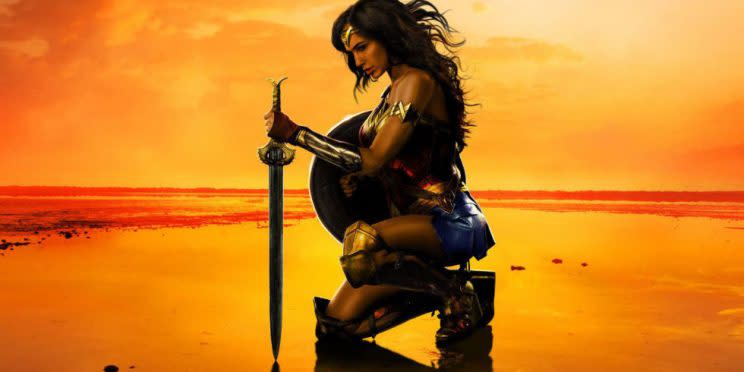
She might be the most famous female superhero ever, but we forgive you for not having Wonder Woman’s origin story straight. During 75 years of world-saving, her official biography has had a few nips here, a few tucks there. The long-awaited Wonder Woman film offers yet another version of the Amazon’s genesis, cherry-picking from her various comic backstories and tossing in some new details for good measure. Yahoo Movies has sorted through the stacks to present a rundown of the 10 biggest ways the movie differs from the classic DC Comics.
Wonder Woman’s ‘birth’
From her earliest days in All-Star Comics, the story of Diana’s “birth” was largely unchanged: Hippolyte (the spelling was later changed to Hippolyta), queen of the Amazons, sculpted a child out of the clay soil of Paradise Island. The goddesses of Olympus (with an assist from Hermes) each bequeathed a powerful gift to the child and then willed her into existence.

When DC rebooted its entire line in 2011, Diana’s provenance was changed. In the “New 52” continuity, the child is the biological daughter of Zeus and Hippolyta and imbued with all the powers of a demigod, including super strength, speed, and the ability to fly. In this version, Diana grew up believing she was created from clay, but this turns out to be a cover story that Hippolyta concocted to hide the truth.
The film adheres more closely to the latter version, with a few deviations. We learn that Diana is indeed the biological child of Zeus and Hippolyta, and that Hippolyta keeps the information from her daughter to protect her from Ares. Ares has been systematically destroying the gods of Olympus, and Hippolyta knows that if he discovers Diana, he will try to kill her next. That explains why during the film (and as featured in the trailers), Diana (Gal Gadot) tells Steve Trevor (Chris Pine), “I have no father; I was brought to life by Zeus.”
Paradise Island
The Amazons have traditionally hidden from “Man’s World” on a remote isle. For the first four-plus decades of her comic career, including the classic Lynda Carter TV show, the place was known simply as Paradise Island. In 1986, artist-writer George Pérez led a major revamp of the comic. In his seminal series, the Amazons lived in the city-state of Themyscira (as they do in Greek myth) until it was sacked by the army of Heracles. They resettle on Paradise Island, which they eventually rename in honor of their former homeland.

The movie sticks with Themyscira as the name for the island, although Steve Trevor pays tribute to the original moniker by jokingly referring to the locale as “Paradise Island.” In both the comics and the film, the island is obscured from the outside world through the actions of the gods: In the comics, it’s typically Athena’s handiwork; in the film, it’s Zeus’s.
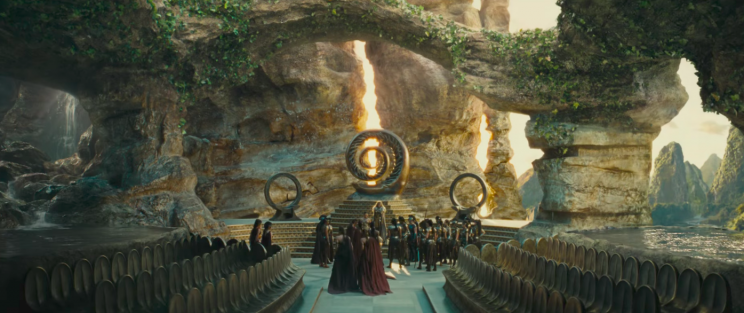
Diana’s training
In the comics, the gods alert the Amazons to an encroaching threat from Man’s World; Hippolyta calls for a contest of skill to determine the greatest warrior, who will be sent off to thwart the menace. Despite being forbidden by her mother from competing, a disguised Diana handily bests her sisters in various events — including jousting atop the island’s indigenous Kangas (Diana’s giant kangaroo is named Jumpa). Ultimately, Diana prevails (usually after one last contest to deflect bullets) and is reluctantly named champion by her mother.

The film, however, does away with the Amazon Olympics. Instead, Diana secretly trains with her aunt Antiope (Robin Wright), with whom she begins to harness her godlike abilities so that she will be ready to save the world when duty calls.
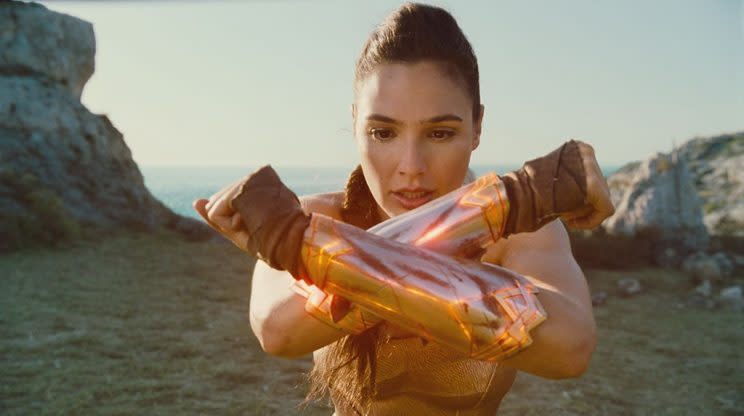
The outside threat
As noted above, in most of the comic iterations, the Amazons must find a champion to help stem an existential threat from the outside world. Up until the ’80s, Wonder Woman was pressed into service against Nazi Germany. Pérez’s version, set during the Cold War, changed it to the nuclear threat presented by the Soviet Union. The film, meanwhile, is set in 1918, during the waning days of World War I.
The filmmakers have cited multiple reasons for the switch: Producer Charles Roven says in the film’s production notes that the change had to do with “juxtaposing this commanding female character who hails from a race of equally strong independent women with the early days of the suffragette movement.” Screenwriter Allan Heinberg offered a different take to Entertainment Weekly. “We are in a very WWI world today with nationalism and how it would take very little to start a global conflict,” he said, adding, “It’s the first time we had an automated war. … New horrors were unleashed every day.”
But perhaps there’s a less esoteric explanation — say, DC wanted to differentiate Wonder Woman from a certain other star-spangled septuagenarian superhero who spent the bulk of his origin film dispatching Nazis (a film that also happened to star a blond, motorcycle-riding leading man named Chris).
Her costume
Wonder Woman’s original 1941 costume featured the iconic red breastplate with golden eagle symbol, a star-covered blue skirt, red boots, a golden tiara, and bullet-deflecting bracelets (all Amazons wore bracelets as symbols of their service to Aphrodite and as a reminder of their time spent in bondage at the hands of Heracles).

Other notable accessories included her Lasso of Truth, sword, and shield. Over time, the costume (d)evolved — the skirt became short shorts and then pants; the eagle was redrawn as a “WW”; sometimes she had a red cape, sometimes she had a jacket, and sometimes she ditched the whole getup for an all-white ensemble.
Though more subdued in tone, Wonder Woman’s cinematic costume is pretty close to the iconic look from the comics, minus the stars on the skirt.
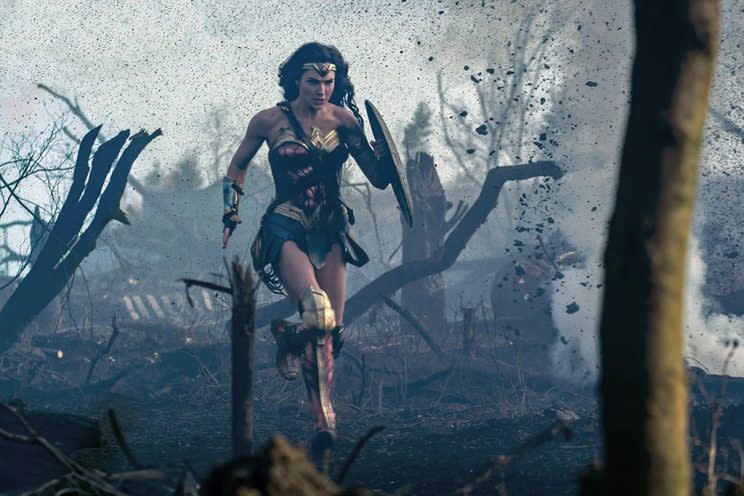
The invisible jet?
Beginning with her initial appearance in All-Star Comics No. 8, Wonder Woman has used an invisible plane to get around. But when her character’s powers were revamped in the 1980s, she was given the power of flight, eliminating the need for her one-woman air force. While director Patty Jenkins told Yahoo Movies that she’d love for the invisible jet to make an appearance onscreen in the future, the DC Extended Universe version of Wonder Woman follows the latter-day comic playbook, meaning Wonder Woman can fly.
Her favorite humans
Wonder Woman’s two BFFs dating back to her All-Star Comics debut are Steve Trevor and Etta Candy. Diana’s longtime love interest from the very first issue, Trevor is the U.S. military intelligence officer whose crash off the coast of Paradise Island sets in motion Wonder Woman’s emergence as a superhero. Though his role has changed over the past seven decades, he is often depicted as a dude in distress, requiring Wonder Woman to rescue him.

Etta Candy, meanwhile, has been Diana’s sidekick from the All-Star Comics days, known for her notorious sweet tooth and boundless good humor.

With the 1980s redo of Wonder Woman, Steve wound up falling for Etta Candy, who was at the time serving as his junior officer. They would later get married.
In the film, Steve Trevor is a U.S. military agent assisting the British, and his crash off the coast of Paradise Island indeed sets the plot in motion. However, as Pine told Yahoo Movies months ago, his Trevor is a hero in his own right and definitely not the dude in distress.
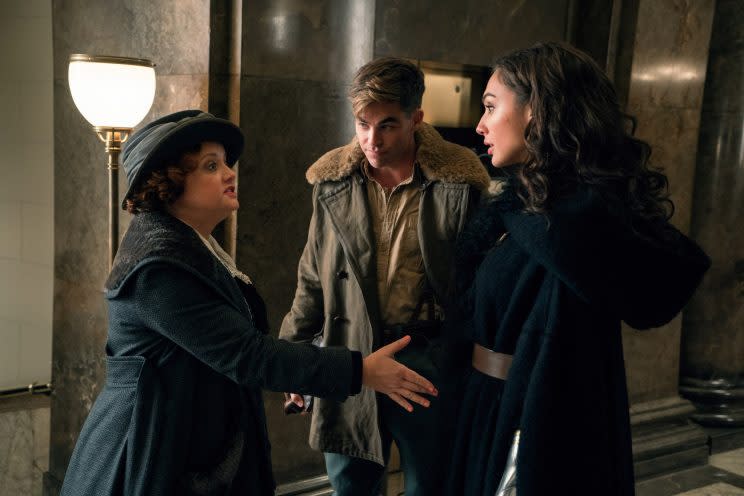
Lucy Davis plays Etta Candy in the film, serving as Steve’s British attaché. The film character is played for laughs, especially as she helps Diana adapt to life in London, but the celluloid Etta does manage her own hero moment.
Ares
Although introduced as Ares in Wonder Woman No. 1 in 1942, the Greek god of war was quickly renamed with his Roman appellation, Mars, for the next 40 years. He clashed frequently with Wonder Woman and fought against the Allies in World War II, often striking from his outer-space headquarters on, yes, Mars.
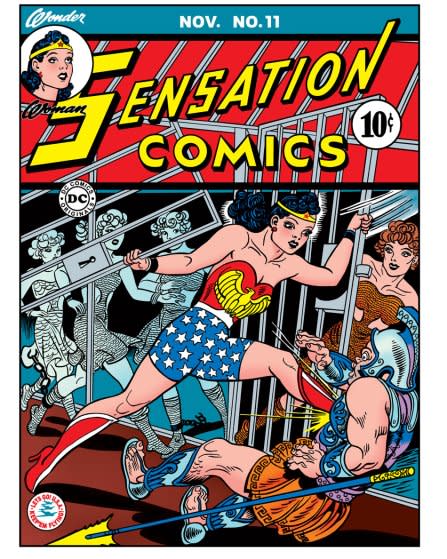
While his original getup included orange Greco-Roman armor, Ares got a major upgrade in the costume with Pérez’s 1980s revamp of Wonder Woman, where the war god drew power from the U.S.-Soviet conflict and tried to start World War III.

The big bad in the film, Ares has found his might boosted by the Great War. He has decimated Olympus and is hunting for Zeus’s lost daughter Diana, while also planning to maximize destruction on the battlefield. As in the comics, the movie version of Ares can possess and control mortals, and his appearance takes a cue from the 1980s.
Doctor Poison
The alter ego of Princess Maru, Doctor Poison was a 1940s Wonder Woman villain who concocted toxins first for the Nazis and later for the Japanese during World War II. A more recent incarnation, Marina Maru, was initially a granddaughter who assumed the Doctor Poison mantle. Subsequent versions of Marina Maru have been Russian and Japanese, but all are known for wearing hooded disguises, dreaming up deadly chemical weapons, and constantly being thwarted by Wonder Woman.

In Wonder Woman, Doctor Poison is the alter ego of Isabel Maru (Elena Anaya), the mad scientist in league with General Ludendorff (Danny Huston). She wears a mask to cover her face, which has been disfigured from experiments gone awry.

Diana Prince
Originally, there was a separate character — a nurse — named Diana Prince, who had a striking resemblance to Wonder Woman. Upon encountering Ms. Prince — who happened to be in love with a man in South America — Amazon Diana realized her good fortune (which she attributed to the godly intervention) and assumed the woman’s identity, allowing her to go off with her boyfriend and giving Wonder Woman a plausible civilian guise.
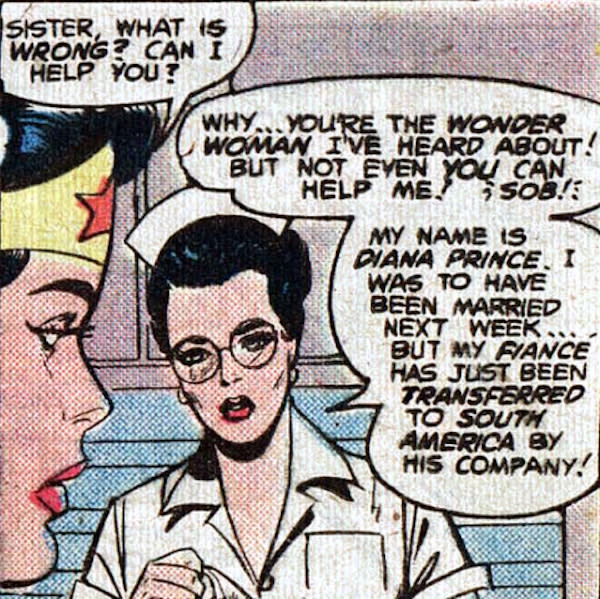
The film, following the lead of later DC reboots, streamlines everything, doing away with the separate character and making Diana Prince a straightforward alter ego, like Clark Kent — complete with glasses, natch.

Watch: The Wonder Woman Cast Reveals How the Invisible Jet, Jumpa Would Work in Sequel
Read more from Yahoo Movies:

